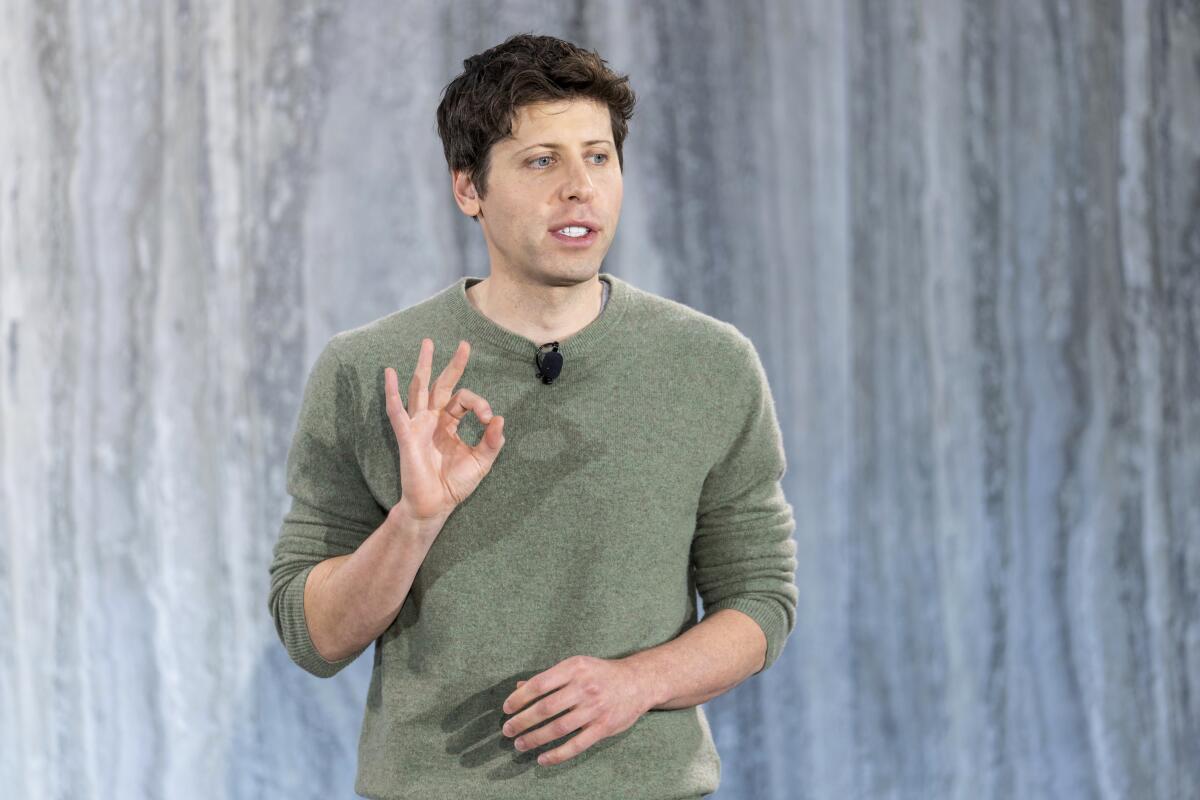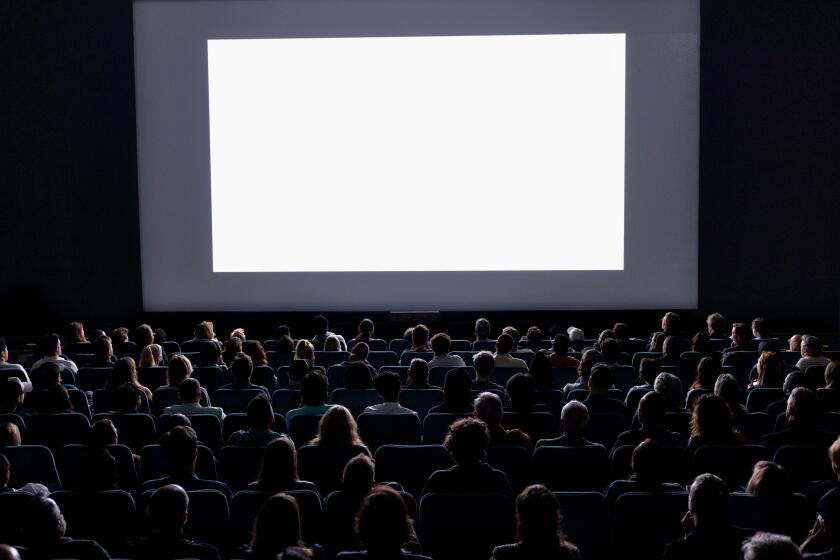Five days of chaos: What just happened at OpenAI?

- Share via
Nearly as quickly as he left, Sam Altman is back.
Following his abrupt and still largely unexplained firing from the influential artificial intelligence developer OpenAI on Friday, the 38-year-old technology entrepreneur will now return to the firm behind ChatGPT and other popular AI programs.
The once and future chief executive will answer to a different board of directors than the one that fired him late last week, the company wrote on X, formerly Twitter, adding: “We are collaborating to figure out the details.”
After a whirlwind week of boardroom intrigue, there’s been a lot to take in.
Why did Sam Altman get fired?
It’s still not entirely clear.
On Friday, the company published a blog titled “OpenAI announces leadership transition,” in which it said Altman would be leaving after “a deliberative review process by the board, which concluded that he was not consistently candid in his communications.”
In Culver City, a gathering of indie filmmakers who used AI software to make short films takes place amid a broader Hollywood reckoning with automation.
The board — which then included Ilya Sutskever, OpenAI’s chief scientist; Adam D’Angelo, chief executive of the Q&A platform Quora; Tasha McCauley, a tech executive; and Helen Toner, a director at Georgetown’s Center for Security and Emerging Technology — no longer had “confidence in his ability to continue leading OpenAI,” they wrote.
But details about what exactly Altman — one of the biggest names in the booming AI sector, and a fixture of the San Francisco Bay Area’s startup ecosystem — did wrong have been scarce, prompting some to criticize OpenAI’s board for creating an information vacuum.
After firing him, the board moved to replace Altman with an interim CEO: first chief technology officer Mira Murati and then Emmett Shear, former head of the Amazon-owned streaming platform Twitch. Shear said that he would commission an investigation into Altman’s ouster but that it was not prompted by a “specific disagreement on safety.”
Nevertheless, many have speculated that the issue was a dispute over how quickly — and safely — the company should be moving to develop increasingly powerful AI software. Shear has voiced concerns about AI development in the past. (Altman has acknowledged the technology’s risks, too, but also pushed back against regulations.)
Altman’s pursuit of outside funding to kick-start other AI ventures, including a semiconductor startup and an AI hardware startup, may have also been a point of tension.
What is OpenAI, anyway?
If you’ve noticed a sudden boom in artificial intelligence over the last year or two, it’s in large part because of OpenAI.
In addition to doing a lot of research in the field, the firm has released two products — the image generator DALL-E and the chatbot ChatGPT — that have gained widespread attention from the general public. Both fall into the field of “generative AI,” or AI that ingests vast quantities of data and can then output nominally original media based on patterns it deciphers.
Under the terms of the WGA’s new contract, AI is here to stay — with limits.
The result of these and other, competing software products has been a widespread boom in the use of AI for a variety of tasks including filmmaking, cover-letter writing and dating — and, in some cases, a backlash over job displacement and other ramifications of mass automation.
So how did Altman wind up coming back?
After his sacking, Altman quickly lined up a landing at Microsoft, where he was set to lead an AI research team. The Redmond, Wash.-based tech giant has an ongoing relationship with OpenAI, agreeing earlier this year to invest $10 billion in it — a bid to compete with other major players in the frothy AI market.
But many at OpenAI wanted Altman back. More than 700 of the firm’s staffers signed a letter Monday calling on the board to resign and also reinstate the ex-executive. If their ultimatum was not met, they threatened to follow Altman to Microsoft, which had offered to hire them all.
Murati, the first interim CEO, had at one point reportedly been interested in re-hiring Altman. Those conversations continued under Shear, who Bloomberg reported Tuesday afternoon was talking with Altman, OpenAI investors and at least one member of the board about reinstating Altman as CEO or possibly the director of a transitional board.
By Tuesday evening, Altman was back on the inside as if the whole thing had never happened. He’s set to be joined by a newly reconstituted board that will keep on D’Angelo, the Quora executive, and also include former Salesforce co-CEO Bret Taylor and former U.S. Treasury Secretary Lawrence Summers.
Isn’t all this chaos bad for business?
Almost certainly. The drama at one point knocked $48 billion off Microsoft’s valuation, and briefly incited a scramble by competing AI firms to hire away Altman loyalists. The instability may also push some of OpenAI’s enterprise customers to reconsider their reliance on the firm’s software.
But that may be beside the point.
High-profile authors such as Douglas Preston, George R.R. Martin and Michael Connelly are suing tech companies, saying that generative artificial intelligence software is ripping off their copyrighted work. But the legal issues may be complicated.
OpenAI is fairly unique in Silicon Valley because, although it does have some for-profit elements, those elements are subservient to a nonprofit structure. The board of directors that pushed Altman out represents a 501(c)(3) and holds as its mission the creation of general-use AI that will benefit mankind, not the generation of profit.
“Most boards are tasked with ensuring their CEOs are best serving the financial interests of the company,” Times columnist Brian Merchant recently wrote of the unusual incentive structure. “OpenAI’s board is tasked with ensuring their CEO is not being reckless with the development of artificial intelligence.”
Nevertheless, OpenAI was recently in talks with investors that would have valued it at $86 billion.










